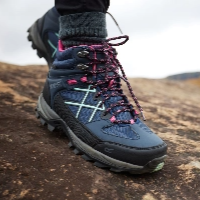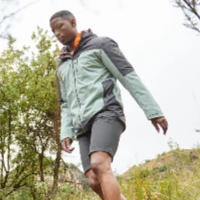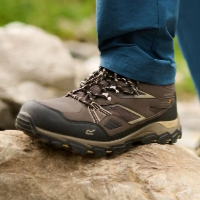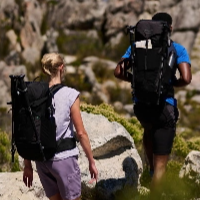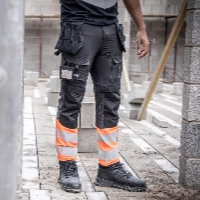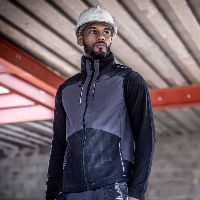What to Wear Camping in Winter
Whether you camp in the summer or the winter, temperatures begin to drop off in the evening. A lovely sunny day of 16 °C can become a chilly night of around five or six degrees. This will drop even further between November and February. Camping in winter is not for the faint-hearted and, if you do choose to go at this time of year, there are a few necessities that need to be packed to keep you and your family warm.
Below, we’ve advised what you should wear camping in the cold weather, why wool is an amazing material and how to keep your feet toasty.
What to wear camping in cold weather
We strongly advise that you wear lots of layers for camping in winter. Layers are much more effective at keeping the heat in than wearing one thick item of clothing.
You should wear a base layer, a mid-layer and a top layer. The base layer should act as a second skin. This means it must be quite fitted (though not too tight) and have long sleeves. Merino wool or synthetic materials would be a good choice of fabric. This is because the clothing should wick moisture away from your skin, something that wool is very good at.
For your mid-layer, you should choose something that is quite thick but not as close-fitting as your first item. It could be a fleece or a piece of fleece-lined clothing.
The final item should be waterproof and able to fit comfortably on top of your previous two layers. The waterproof material will not only keep you warm, but it’ll keep you dry should it rain or snow. Investing in a heated jacket might be worthwhile. These battery-powered coats can be turned on to keep you warm for up to six hours, but parka coats are also a timeless classic to consider instead.
Don’t make the mistake of neglecting your feet when preparing your camping wardrobe. If your feet are cold, you won’t sleep well and that’s never good on a camping trip, particularly if you’re hiking for hours in the day. The layering approach should also be used for your feet. You could choose a pair of ankle socks and apply a pair of thicker socks over these. The cotton pair will allow your feet to breathe while you walk, and the thick pair will keep them dry and warm. You should always take spares, as there’s a good chance your feet will get wet. There’s nothing worse than putting on a pair of freezing cold damp socks.
Store the socks that you’ll wear the following day in your sleeping bag overnight. This will keep them warm for the morning, and means they’re close at hand if you have to get up in the night.
Finally, pack lots of accessories to keep you warm such as gloves, hats and scarves. Finger-less gloves may be a good option, so you can undertake activities, like cooking, easily while wearing them. A hat can be worn at night as well as during the day. It could even be pulled down over your ears to protect them from the cold and the wind.
If you want to stay warm while camping, choose your materials carefully. Cotton should be avoided as it allows your skin to breathe instead of keeping the heat in. Wool is one of the best materials and we explain why below.
How does wool keep us warm?
Wool is able to react to fluctuations in your body temperature much better than any other material. This is because of the tiny pockets of air in the fibres - the right wool can warm your body in cold temperatures and cool your body in warm temperatures.
Even when it’s damp, wool still keeps you warm. It has a high absorbency rate and can hold moisture for much longer than other materials. The fibres are able to generate heat when they’re moist. As previously mentioned, this moisture can be taken away from the skin, preventing the wet surface from making you chilly.
How to stay warm camping in the cold
The right camping gear can also help you to keep warm when the temperatures dip.
A good quality sleeping bag could be the difference between being freezing cold or boiling hot. Sleeping bags come in many shapes, sizes, materials, thicknesses, etc. With this in mind, it’s important to take the time to figure out which one is best for you. A double layer sleeping bag will help to keep the heat in and minimises cold spots. Sleeping mats can be good for insulation too as they act as a barrier between you and the cold ground.
When you’re setting your tent up, you should ensure that you find a sheltered spot. A covered area is going to offer much more protection from the elements than an open field, where you’ll be prone to more wind.
Finally, it’s important to eat the right food to keep your body warm. High energy food like chocolate and nuts can help. If possible, have some hot food in the evening that can be cooked on a portable gas stove. Something like pasta in a sauce is a nutritious meal that will warm you up and give you enough energy for the following day.
How to warm up your feet in winter
It can be difficult to keep your feet warm when you’re camping. Wearing socks to bed can help. Alternatively, if you just can’t warm your extremities up, you could pack some feet warmers. When activated, these little packs heat up and stay warm for around eight hours. The packs will stick to your socks so even when you’re sleeping, they’ll stay on your feet all night long.

